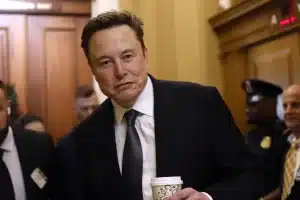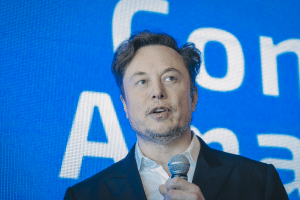The Boring Company’s Las Vegas Convention Center Loop has been completed, and as with every other project from Elon Musk, the initiative has attracted a barrage of criticism from skeptics, some of whom have ridiculed and mocked the transport tunnel system. But just like SpaceX critics who insisted that orbital rockets would never land on a drone ship in the middle of the ocean, or Tesla skeptics who insisted that the Model 3 was a lemon that no one would buy, The Boring Company’s critics may very well be missing a crucial point.
The criticisms surrounding the LVCC Loop are vast, with publications like CNET noting that the system was “disappointing” and “lame” due to its capability to only transport 4,400 people from a fleet of 62 Teslas. VICE described coverage of the LVCC Loop as the “most embarrassing news clip in American transportation history.” Tech publication Futurism argued that the LVCC Loop is “incredibly inefficient.” Even dedicated EV blogs have dismissed the project as “boring.”

And these are just from some publications. A look at the reactions from social media would show numerous users, including the usual band of Tesla and SpaceX skeptics, calling out the LVCC Loop for being yet another example of why Elon Musk is a failure. This became particularly notable after celebrity Kylie Jenner posted a short video of a trip in the Las Vegas tunnels. But amidst the frothing mouths of anti-Elon Musk individuals and those that simply disbelieve the potential of The Boring Company lies one key point—the LVCC Loop, at its current state, is not the end-all and be-all of the tunneling startup’s ambitions.
One thing that Boring Company critics typically forget is the fact that the LVCC Loop’s tunnels are incredibly cheap and quick to build. It’s rarely brought up now, but The Boring Company was one of two companies that were shortlisted for the Las Vegas Convention Center transport system. The other company was Austria-based Doppelmayr Garaventa Group, which proposed a traditional above-ground campus transit system estimated to cost $215 million to complete. The LVCC Loop was completed for $52.5 million. It’s scalable as well, with the LVCC Loop easily being expanded into the larger, more expansive Vegas Loop.
While the Las Vegas Convention Center Loop’s current iteration is a conservative version of Elon Musk’s ambitious tunnel concepts, the core of The Boring Company’s innovation is present in the project. This is because ultimately, The Boring Company’s goal is to make tunneling quicker and more efficient. In this regard, the startup was able to accomplish its goals, and that’s without using its flagship tunnel boring machine. As per previous reports, The Boring Company used Godot+, an upgraded version of its first TBM, to complete the LVCC Loop.
The Boring Company is hard at work developing Prufrock, a next-generation, all-electric tunnel boring machine that’s designed to be capable of digging 1 mile per week, or about six times faster than Godot+. Prufrock is designed to begin tunneling within 48 hours of its arrival onsite as well, making its deployments very easy and quick. Machines such as Prufrock, and the incredibly low cost of its tunnels, are The Boring Company’s true disruption.
This is incredibly impressive considering that Godot+ is no slouch. While speaking to German publication Manager Magazin, Martin Herrenknecht, the founder of Herrenknecht AG, dismissed The Boring Company, stating that Elon Musk’s TBMs were only capable of drilling 20 meters in one week. In a statement to Teslarati, an individual familiar with the matter clarified that Herrenknecht’s information was inaccurate, as Godot+ had already managed to dig over 40 meters in one day.

Perhaps the most notable factor to point out amidst the intense criticisms against the LVCC Loop is the fact that the system will most definitely not stay the way it is today. Yes, it only deploys Teslas that are still driven by human drivers for now, but that will soon improve with the use of Autopilot. Yes, the system only has a capacity of 4,400 people per hour with 62 Teslas today, but the vehicles could soon travel quicker, and larger transport pods that hold 16 people per vehicle could improve the system’s capacity. It’s just a bit hard to see these things, or even acknowledge them, if one were already under the notion that The Boring Company is fraudulent, because Elon Musk.
The Boring Company is only getting started. The LVCC Loop could also be considered as a proof of concept, and it will be expanded to other areas in Las Vegas. Improvements to the LVCC Loop, such as the deployment of more Teslas and the use of Autopilot, could also be implemented quickly. Similar tunnels could be built in Florida soon as well. And once Prufrock is deployed, and once other low-cost tunnels are constructed at speeds that have never been seen before, The Boring Company’s skeptics might very well find themselves in the same boat as those who were absolutely certain that orbital rockets could not land on an autonomous barge, or that electric vehicles are simply not feasible.





